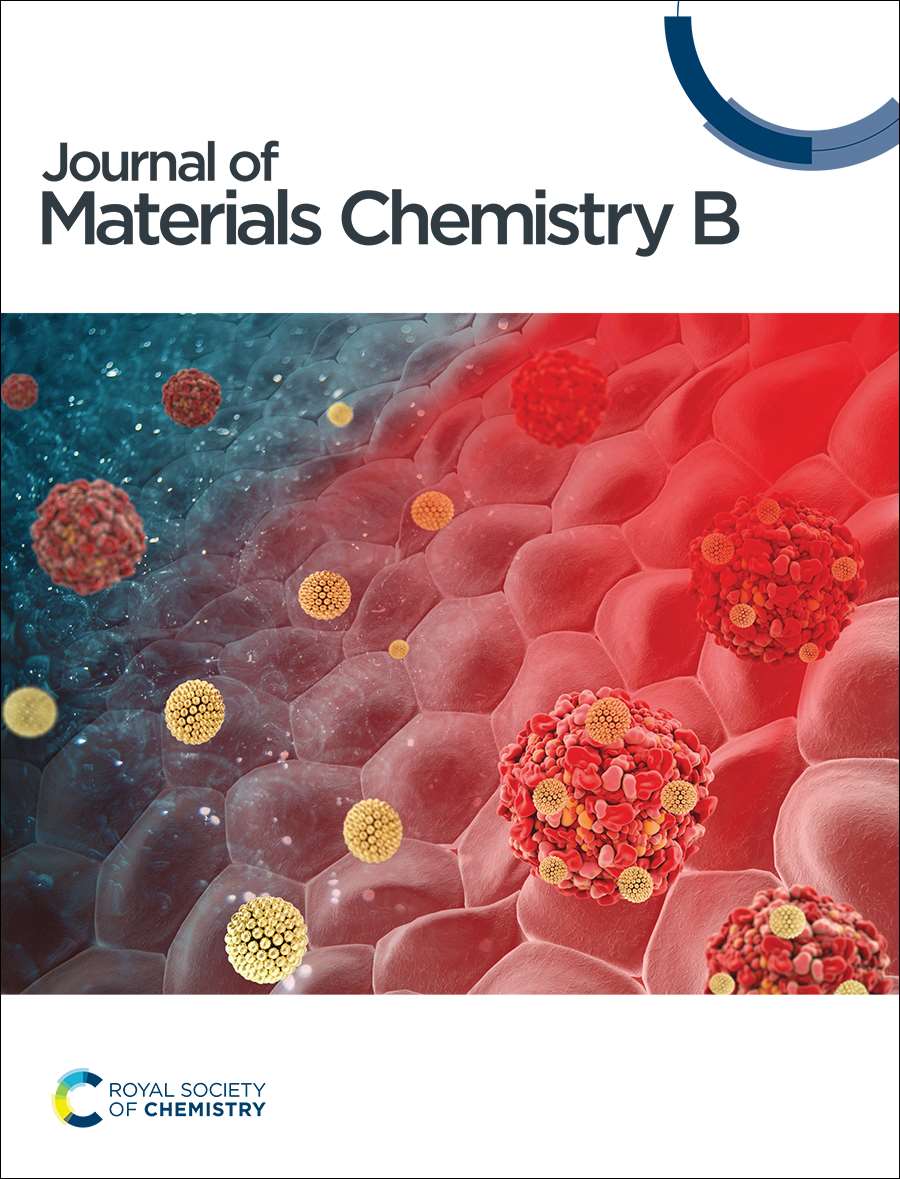Reversible post-synthesis tuning of the superparamagnetic blocking temperature of γ-Fe2O3 nanoparticles by adsorption and desorption of Co(II) ions
IF 6.1
3区 医学
Q1 MATERIALS SCIENCE, BIOMATERIALS
引用次数: 41
Abstract
The influence of the post-synthesis adsorption of Co(II) ions on the structural and magnetic properties of maghemite (gamma-Fe2O3) nanoparticles with a mean particle size of about 10 nm has been investigated. It is shown that the step-wise adsorption of Co( II) can controllably increase the blocking temperature, T-B, of the system up to 60 K with respect to that of untreated particles, while neither the particle size nor the particle size distribution are significantly modified. This is accompanied by a four-fold increase in the coercivity, H-C, at low temperatures. Using a selective leaching of the previously adsorbed Co(II) ions the T-B and H-C values of the pristine gamma-Fe2O3 nanoparticles are recovered. Hence, a reversible and controllable tailoring of the magnetic properties (e.g., T-B and H-C) of the gamma-Fe2O3 nanoparticles can be achieved by a simple adsorption and desorption process of Co( II) ions after their synthesis.Co(II)离子吸附解吸对γ-Fe2O3纳米颗粒超顺磁阻滞温度的可逆合成后调谐
研究了Co(II)离子的合成后吸附对平均粒径约为10 nm的磁赤铁矿(γ - fe2o3)纳米颗粒结构和磁性能的影响。结果表明,Co(II)的分步吸附可以使体系的阻断温度T-B相对于未处理的颗粒可控制地提高到60 K,而粒径和粒径分布没有明显改变。在低温下,矫顽力H-C增加了4倍。通过选择性浸出先前吸附的Co(II)离子,恢复了原始γ - fe2o3纳米颗粒的T-B和H-C值。因此,可以通过合成后Co(II)离子的简单吸附和解吸过程来实现γ - fe2o3纳米颗粒磁性能(如T-B和H-C)的可逆和可控剪裁。
本文章由计算机程序翻译,如有差异,请以英文原文为准。
求助全文
约1分钟内获得全文
求助全文
来源期刊

Journal of Materials Chemistry B
MATERIALS SCIENCE, BIOMATERIALS-
CiteScore
11.50
自引率
4.30%
发文量
866
期刊介绍:
Journal of Materials Chemistry A, B & C cover high quality studies across all fields of materials chemistry. The journals focus on those theoretical or experimental studies that report new understanding, applications, properties and synthesis of materials. Journal of Materials Chemistry A, B & C are separated by the intended application of the material studied. Broadly, applications in energy and sustainability are of interest to Journal of Materials Chemistry A, applications in biology and medicine are of interest to Journal of Materials Chemistry B, and applications in optical, magnetic and electronic devices are of interest to Journal of Materials Chemistry C.Journal of Materials Chemistry B is a Transformative Journal and Plan S compliant. Example topic areas within the scope of Journal of Materials Chemistry B are listed below. This list is neither exhaustive nor exclusive:
Antifouling coatings
Biocompatible materials
Bioelectronics
Bioimaging
Biomimetics
Biomineralisation
Bionics
Biosensors
Diagnostics
Drug delivery
Gene delivery
Immunobiology
Nanomedicine
Regenerative medicine & Tissue engineering
Scaffolds
Soft robotics
Stem cells
Therapeutic devices
 求助内容:
求助内容: 应助结果提醒方式:
应助结果提醒方式:


